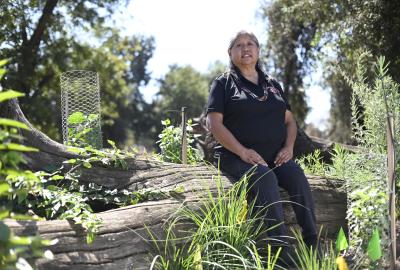4 ways hurricanes are becoming more dangerous and why
Hurricanes are big, swirling storms that form over warm ocean waters. They gather energy as warm, moist air rises up from the ocean’s surface.

The ocean is getting warmer as the climate heats up. The Intergovernmental Panel on Climate Change, a group of nearly 200 scientists who assess thousands of climate studies from around the world, has confirmed that climate change will likely deliver a future of more dangerous hurricanes.
The very latest research suggests this future is already here.
Here’s what climate science tells us about how hurricanes are changing:
More frequent strong hurricanes
IPCC scientists say that climate change is likely to make large storms more intense and frequent in the future. That doesn’t mean there will be more hurricanes every year. What it does mean is that stronger, Category 3-5 storms, will occur more often.
- Preparing for the next hurricane
- Can insurance save us from climate disasters?
- Applying for FEMA aid? Follow these tips from disaster relief experts.
Recent studies suggest this is already happening. One study found the most damaging U.S. hurricanes are three times more frequent than 100 years ago.
Why it matters: More severe storms, coupled with more development on risky coastlines, translate to more destruction. Hurricanes that caused more than $1 billion in damage have roughly doubled since the 1980s.

Dangerous downpours
Science has also clearly established that climate change will increase rainfall from hurricanes. That’s due to warmer waters supplying more moisture to storms, and a warmer atmosphere that can hold more water.
Recent rapid-response analysis estimated that climate change worsened extreme rainfall from Hurricane Ian in 2022 by about 10%. Hurricane Harvey’s record-smashing 60 inches of rain on Texas in 2017 was boosted by 15-38%.
Why it matters: “Just a few extra centimeters of rainfall from climate change could be the difference between getting a very soaked lawn or thousands of dollars of property damage,” says Kevin T. Smiley of Louisiana State University, who studies disasters and climate change.
Bigger storm surges
The IPCC also confirms that sea levels are rising due to climate change caused by humans, and that increases the height of storm surge — the wall of water a hurricane whips up and sends crashing onto the shore.
Why it matters: Storm surge poses the greatest threat to life during a hurricane, due to the sheer power of the water. Storm surge can also cause serious flooding miles from shore.
Most of the devastation wrought by Hurricane Katrina, which hit Louisiana in 2005 as a Category 3, was due to a monster storm surge — reaching 25 feet in some areas — that breached levees in New Orleans. Hurricane Ian’s storm surge reached 15 feet in Fort Myers, Florida, in 2022, knocking down homes and drowning at least 30 people.

Accelerating wind speeds
In recent years, several major Atlantic storms have rapidly intensified their wind speeds, shifting from dangerous to catastrophic in a matter of hours.
In 2017, Hurricane Maria whirled from Category 1 to Category 5 in just 18 hours. And in 2021, Hurricane Ida sped from Category 1 to near Category 5 in less than 24 hours. In fact, 16 out of the 20 Atlantic hurricanes in 2020 and 2021 underwent rapid intensification.
The 2021 IPCC report says that there is evidence of human influence on the trend toward rapid intensification of hurricanes.
Why it matters: Preparing for a hurricane and evacuation takes time. When a hurricane’s threat level accelerates quickly, people have less time to gather their loved ones, secure their homes and property, and move to safety.
Ways to reduce hurricane damage
Early warning systems, building codes and keeping development out of the most dangerous areas can better protect communities from storms we’re already experiencing. Natural infrastructure, like restored wetlands, can absorb the shock of storm surges.
But to get at the root of the problem — climate change — the world needs to rein in planet-warming carbon dioxide emissions. Science has also made clear that cutting pollution from methane, another greenhouse gas, is the fastest way to slow global warming and avoid some of the most extreme climate impacts.
Learn more about climate change and hurricanes from EDF.


